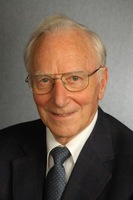


Strict validity of Maxwell's equations in vacuum is assumed, even at smallest dimensions. Concepts of field velocity v, rest field, basal electromagnetic (EM) field etc. are defined. By rigorous deduction, this leads to flow equations that have the same structure as those of fluid dynamics and thus in fact describe an EM fluid.
Electron and photon models are presented; they turn out to be condensed turbulences in the EM fluid (primary level). Since energy migration is caused both by convection (flow) and by work done by the forces, it occurs with a velocity &gev (secondary level); it obeys classical relativistic dynamics. The same holds for an electron model moving as a whole in an external (electrostatic, gravitational) field (tertiary level), but for the EM fluid itself (primary level) we encounter the laws of what has been called alternative relativistic dynamics. Determining the fine-structure constant reduces to a purely mathematical problem (still to be solved numerically). The photon model possesses all properties known to hold, thus leading to a fully natural interpretation of the wave-particle duality. No incompatibilities occur between relativity and quantum physics.



Strict validity of Maxwell's equations in vacuum is assumed, even at smallest dimensions. Concepts of field velocity v, rest field, basal electromagnetic (EM) field etc. are defined. By rigorous deduction, this leads to flow equations that have the same structure as those of fluid dynamics and thus in fact describe an EM fluid.
Electron and photon models are presented; they turn out to be condensed turbulences in the EM fluid (primary level). Since energy migration is caused both by convection (flow) and by work done by the forces, it occurs with a velocity &gev (secondary level); it obeys classical relativistic dynamics. The same holds for an electron model moving as a whole in an external (electrostatic, gravitational) field (tertiary level), but for the EM fluid itself (primary level) we encounter the laws of what has been called alternative relativistic dynamics. Determining the fine-structure constant reduces to a purely mathematical problem (still to be solved numerically). The photon model possesses all properties known to hold, thus leading to a fully natural interpretation of the wave-particle duality. No incompatibilities occur between relativity and quantum physics.